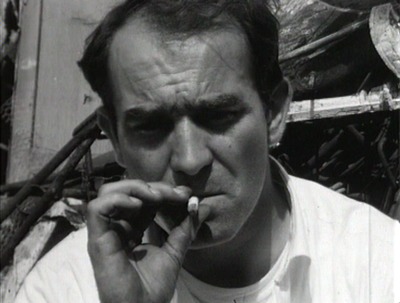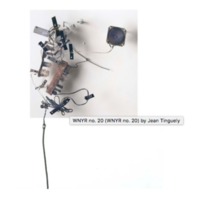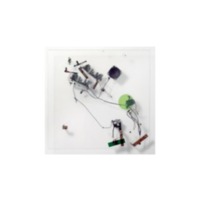Jean Tinguely
Born in Freibourg, Switzerland in 1925, Jean Tinguely was the only child of two working-class parents. After moving to Basel, Tinguely began his artistic career in 1940 as a window decorator. While working part-time, Tinguely attended the Kunstgewehrbeschule Basel from 1941 until the dissolution of the school in 1945.
Following his graduation, Tinguely joined the social circle of Anarchist Heiner Koechlin. During this time Tinguely’s rebellious tendencies first manifested. Tinguely spent much of his adult life traveling between Switzerland, Paris, and the United States. In 1960 he was one of the Parisian Avant-Garde artist who signed the New Realist Manifesto, which called for art to portray realistic subjects.
After leaving school, Tinguely began working full-time as an artist. Inspired by the works of Marcel Duchamp, Tinguely began to draw and sculpt in the Dadaist style. Observing the growing prevalence of industrialization and mobility following World War II, Tinguely began to incorporate motion into his sculptures. Dynamism was an aspect of his works--either as a component of an otherwise static sculpture, or as a moving work. Tinguely’s pioneering work with motion and sound led to him being considered by many the founder of the Kinetic Art movement.
As a critique of what he viewed as the waste of a mindless consumer culture, he began creating his sculptures out of discarded machinery and other refuse. Tinguely’s satire of modern society cumulated with the production of the large, self-destroying sculptures for which he is most famous. Tinguely died in 1971.
-Alex Dworman


